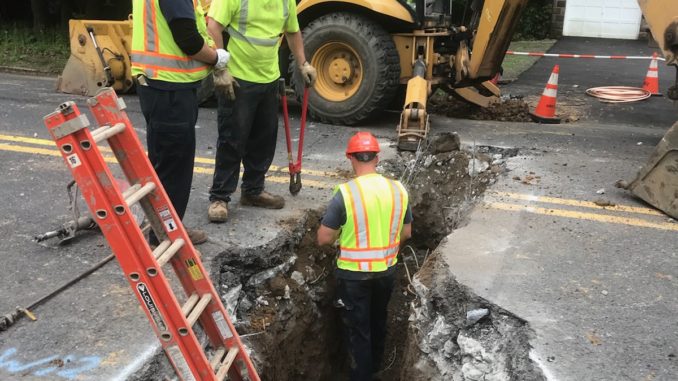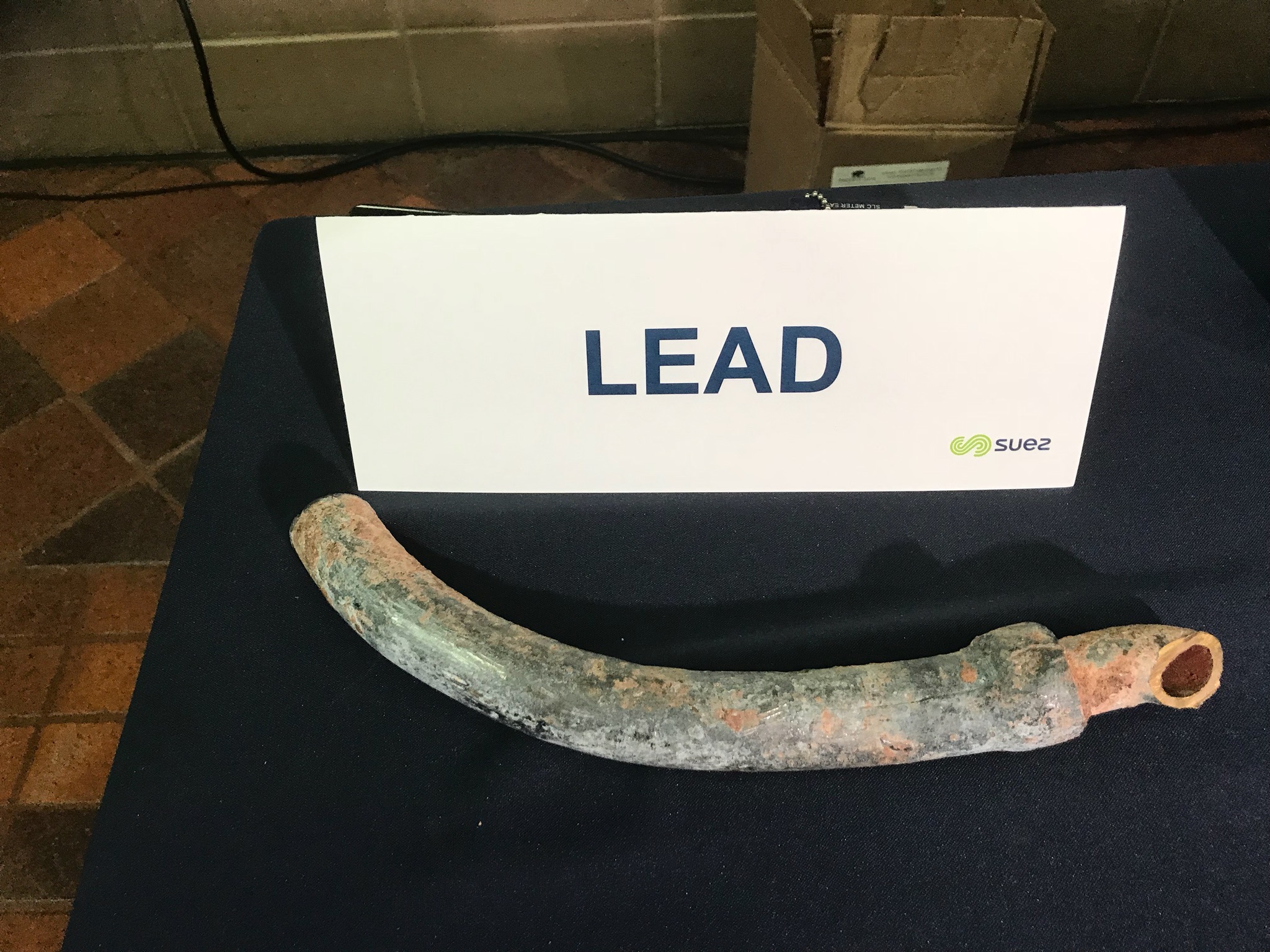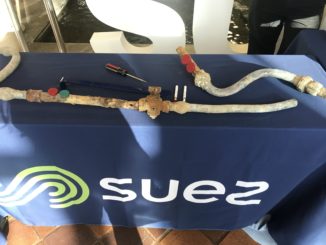
NEW JERSEY—While a state agency charged with disseminating $100 million in state grants to improve water infrastructure and reduce lead levels has yet to issue funding guidelines, another organization plans to release a wide-ranging report Oct. 10 with strategies to reduce lead in drinking water statewide—jump-starting stalled efforts to fund needed improvements.
Officials with Jersey Water Works, a collaborative effort to improve New Jersey’s water infrastructure, convened a task force in December 2018 to focus on eliminating lead in drinking water statewide and a final report was scheduled to be released Oct. 10, said New Jersey Future officials, part of a wide-ranging public and private coalition working to address statewide drinking water challenges.
The statewide report on lead in drinking water plans to offer 19 recommendations, said people who have seen the report, including innovative ideas for policy and funding from Jersey Water Works’ Drinking Water Task Force.
The task force consists of representatives from across the state, including trade associations, not-for-profit groups, academia, environmental groups, advocacy groups, schools and water utilities.
$100 million for schools?
Since the $500 million Securing Our Children’s Future Bond Act was approved by voters in November 2018, which contains $100 million for school water infrastructure improvements, the state Department of Education has not yet issued grant guidelines, though a spokesperson said such regulations are “expected soon.”
Originally, the funding guidelines were expected to be released by end of summer.
Following media reports of nearly 500 schools statewide with at least one drinking water source with high lead levels, the Education Law Center called on the state DOE and Schools Development Authority Sept. 30 to make Bond Act funding available “immediately” to address ongoing lead issues.
Demand for funds
“Given the threat posed by lead to students’ health and development, ELC is demanding the NJDOE and SDA immediately notify districts of the availability of the bond act funding to replace fountains, sinks, piping and other water infrastructure in buildings and/or install and maintain water filtration systems,” said an Education Law Center statement Sept. 30.
“There is no place for lead, a dangerous neurotoxin, in any of our public schools,” said David Sciarra, executive director of the law center.
“We call on DOE Commissioner (Lamont) Repollet and (Interim SDA CEO Manuel) Da Silva to make bond funding immediately available to remediate lead in the water fixtures and pipes of school buildings and establish an expedited process for districts to apply for the funding,” Sciarra said.
Since early summer, the DOE has been conducting public outreach and stakeholder input sessions to help better prioritize water infrastructure funding needs, and also coordinate such efforts with state Department of Environmental Protection officials.
Report takes on lead
“Concentrating on residences, schools, day care centers and small businesses, the group will examine the existing legal and regulatory framework as well as issues of health risk, transparency, environmental justice, public education and cost,” said a statement from the Jersey Water Works task force on lead in drinking water.
The report will highlight a priority list of short- and long-term solutions “that are appropriate, actionable, efficient and coordinated, including clearly defined responsibilities and commitments,” the statement added.
Representatives of New Jersey Future, a statewide nonprofit focused on sustainable growth and a lead task force participant, said one focus of the report will be schools but more importantly it will be upgrading the statewide water supply system—including replacing all lead service lines.
“This [lead in drinking water] is a public health risk that needs to be addressed comprehensively,” said Chris Sturm, New Jersey Future’s managing director of policy and water.
Sturm said the report lays out funding options for government entities to remedy the lead in drinking water problem.
Sturm said there have been “lots of piecemeal solutions proposed” in the past but the report “lays out what we think the state should do” and addresses “the whole issue of lead in drinking water in homes, schools, day-care centers.”
She said recent media reports of a lack of transparency among school districts in revealing results from a first round of school water testing in 2016 and some “short-term fixes” need to be addressed.
In 2016, following reports of lead-contaminated water in schools in Flint, Michigan and Newark, the state ordered school districts to test for lead in drinking water fountains and other potable sources and report results back to the state if any samples exceeded federal standards of 15 parts per billion.
Last year, a Northern Valley Press survey found most districts here prominently posting 2016-2017 lead sampling results, and follow-up efforts to remediate drinking water sources over federal standards.
Early in 2018, Fifth District U.S. Rep. Josh Gottheimer called for greater transparency in releasing school lead test results and urged school water testing be made yearly as opposed to every six years, which the law currently requires.
Gottheimer also called for a statewide website to list every school district’s water sampling results.
However, in July 2018, an Environmental New Jersey survey found only 47 of 76 Bergen County districts provided complete results, with 35 districts reporting at least one reading above 15 parts per billion.
Schools’ lead concerns
Once NJDOE issues funding guidelines for $100 million in state grants via the Bond Act, said spokesman Michael Yaple, the regulations are subject to a 60-day public comment period and then a 30-day window for DOE to reply to the comments. About a month later, the funding guidelines can be published and finalized, Yaple said.
Gary Brune, a New Jersey Future staffer who testified at a June Senate hearing on funding delays on the state Bond Act, said the DOE’s delays in writing guidelines to disburse funds was due to its solicitation of input to determine “what’s the highest and best use of those funds” for schools.
Brune said in many schools, the buildings are not served by a lead line but the issue often is internal plumbing, lead solder and lead fixtures.
He said one school district in Chicago has an innovative solution that employs an automated flushing system that turns water fountains on to clear out stagnant water periodically—reducing any impacts from lead lines or corrosion.
He said such a solution is likely cheaper than replacing all internal lead plumbing and fixtures.
Brune said because every school is different, the solutions for one building may not apply to another.
“This (lead reduction) is not a cookie-cutter thing by simply flushing lines, although that certainly helps,” he added.
Asked if there was any acceptable standard below the federal 15 parts per billion level—which was established as a technology-driven standard obtainable with water-cleaning technology circa 1991—Brune said no such standard has yet been promulgated by water quality or health agencies.
Funding snafus in lead fixes
Sturm noted recommendations for lead service line replacements include “varying funding mechanisms and revenue streams” including state and federal funding options.
She noted one highlight of the upcoming Jersey Water Works task force report “is the recommendations are consensus recommendations” from water quality professionals in a variety of fields.
Funding for replacement of lead service lines—especially customer service lines—continues to be an obstacle to eliminating lead in drinking water.
Suez North America, a private utility which serves 200,000 customers in Bergen and Hudson counties, has proposed a two-year pilot program to replace customers’ lead lines when the utility is also replacing its service lines.
However, the New Jersey Division of Rate Counsel—a state agency that advocates for ratepayers—has opposed the program due to a lack of financial detail from Suez and the utility’s plan to charge all ratepayers for customer lead line replacement costs.
Customer bill: Up to $8,000
Suez’s proposal initially included charging customers $1,000 in a lump sum or installments over a year, with the difference in cost financed by ratepayers. Suez estimated customer line replacements to cost about $3,000 to $8,000.
The utility owns the service line from the water main running down a street to the curb line. From the curb into the customer’s property, the property owner owns the service line.
Suez contends most customers will not replace lead lines without an economic incentive. A Suez official previously said over 100 customer lead lines have been left in place when Suez replaced its portion of a lead service line.
Suez officials have said they let customers know in advance when they will be working on local streets replacing lead lines.
While most lead service lines in Suez’s system are not causing drinking water levels to exceed federal lead standards, say Suez officials, the company initiated an expedited $16 million lead service line removal program in 2019 planning to replace 2,450 utility-owned service lines or connections.
Suez’s expedited efforts to replace its lead lines began in March following pressure from public officials in some of 57 towns in Bergen and Hudson counties over high lead level readings that the utility revealed in January.
The utility reported 15 of 108 homes with lead lines sampled had elevated levels of lead—above the federal standard of 15 parts per billion. As required by New Jersey Department of Environmental Protection, the utility tests drinking water in over 100 homes with lead service lines every six months.
Its recent testing (January-June 2019) showed most samples were below the federal standard.
A Suez spokeswoman said the utility is working with water quality experts and scientists to test corrosion levels in lead pipes removed from its system as well as adjust corrosion treatment chemicals and pH to minimize leaching of lead from pipes.
For information about lead in drinking water, visit suezwq.com or if you are a Suez customer and want to check if a utility line entering your home is lead, visit mysuezwater.com/NJWQ.


